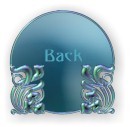
"The Silent Scream"

The smell of the emergency room fills her nostrils as she listens to the questions being shot at her. First, it was the nurses; "What happened to your arms?"they asked.
"Nothing" she replies, as her mind wanders off. She has been here before and knows the questions that will come. But how can she explain when she doesn't fully understand herself?
"Miss, you really need to let us help you," replies the doctor as he lifts her arm to examine it closer. "Does this happen often? Do you have a therapist?"
The doctor and nurse have both seen this before, not just with this one patient although she does seem to come through their doors quite a bit. The coping mechanism of cutting or self mutilating is becoming more common as survivors of horrendous abuse are trying to come to terms with the pain, anger, confusion, guilt and over powering shame that is poisoning their spirits, minds, and souls.
She no longer even hears the questions. She has retreated to her own little world. "They don't know," shouts a voice. "They can't understand," replies another. A small child rocks back and forth in the dark corner hugging its knees to its chest. The rest just watch, not sure of what is taking place.
And in the silence she screams.
In this article I will use fictitious people to unravel some of the mysteries surrounding this type of coping mechanism. I wanted to write this article for the survivors themselves, their family and friends. I wanted to help break the silence that comes from the childhood abuse. The shame that binds them and maintains their silence. Also, the guilt that comes with this kind of coping mechanism. I want to explore hope in the retelling of the stories I have heard. The testimonies of those that have gone before you. The pain they suffered and how they traveled out of the black hole that kept them there.
The lady in this story is fictious, there are millions just like her all over the country. The voices and the child are a part of her world. A world that allows her to cope with a crisis no matter how small. But that is not what brought her here to the emergency room this evening or any other evening that she has been here. This woman uses physical pain to cope with the tremendous emotional pain in her life.
People who cut are usually survivors of childhood abuse. It is my personal belief that this is one of the main factors of 'why' they cut. When a person has committed to going through therapy, they learn of the depth of the damage that was done to them by the abuse from the past and how it continues to affect their lives now. They learn that it is ok to feel the pain of the memories. When they allow themselves to do this, then the cutting subsides on its own. It has been my experience that those who try to stop cutting without going through the therapy process find it very difficult and only suceed for short periods of time.
Rita
Rita is a 23 year old college student. "I remember the first time it happened, I was shaving my legs, I was about 13 years old. The razor cut my ankle. There was something about seeing the blood, feeling the sting of the water hitting it." She draws her arms closer to her chest, her eyes looking at the carpet. "I felt like I was alive."
"All those years growing up, when I was being abused by my brother;" she looks up at me, "I had to not feel . If I allowed myself to feel then others would know. Then we would get caught, then.." her voice trails off, "then I would be in so much trouble."
"But" she continued with an added strength, "I always felt there was a certain evilness inside of me that made people want to hurt me. So I guess when I saw the blood flowing I felt that maybe the evilness would flow out."
She smiles, "That sounds so bizarre to hear myself say that. Because I know that it can't be true. But that is the way it felt inside. Now, I don't know why I do it. Maybe, it is because it gives me a sense of control."
This is a theme I hear repeated quite frequently by people. The sense of control it gives them. It is varying degrees of control. For Rita, she decided that no one could hurt her if she hurt herself first. Linda, whom you will meet later, it was the release of the pain inside. "Something about seeing the blood flow, made me feel better." I believe it is the release that is addictive. Not addictive in the sense of drugs or alcohol (although some say it feels like it) but in the sense of a way of dealing with the pressure. The most successful testimonies I have heard involve the survivor learning NEW coping skills. They slowly relearned how to deal with the stress that life brings; giving them a greater sense of control than the cutting ever brought!!
Linda
In this article, ritual abuse referrs to a repeated ceremony. These ceremonies can be performed by anyone, family, siblings, friends of family or strangers. But it is the methodical repeated ceremonial abuse that I will be referring to when I write about it. Ritual abuse can involve many different aspects so if you feel you have been exposed to Ritual abuse please talk with your therapist about it.
When you look at Linda you would not think anything out of the ordinary about her. She is a busy mother of two; ages 8 and 6. She tries to attend the various athletic games the children are involved in, cheering them on. But at night or when she feels trapped, she arranges time to herself. She gently lays out all the things she needs and sets to work to 'relieve the pressure'.
Linda like the other people in this article is a survivor of not only childhood sexual abuse but of ritual abuse. "I'm not sure when it started happening. I have been cutting for as long as I can remember." She looks me in the eye as she speaks. I notice that her voice is very matter of fact. I also notice it lacks emotion.
"Linda, where are the feelings? I see no emotion in your eyes." Even as I voice the question in my heart I know the answer before she says a word.
"I don't feel anything, I never have." She looks down at her hands, playing with a string on her sleeve. "Is that wrong? Does not feeling emotion make me weird?" She doesn't look up, her brown hair sways back and forth as she shakes her head back in forth; voicing the questions that have been swirling in her head for years.
"No, that makes you wounded. That is all it is. A person is not able to just shut off one emotion. When you try to shut down one they will all follow. Could that be where the 'pressure' that you spoke about earlier be coming from?"
"I don't know. All I know is that I do good for awhile, you know, not cutting. But then, well, then, I have to." Her shame keeps her from looking up.
I know you are thinking, shame is an emotion. Yes, it is but in this case it is more of a reaction. One that was drilled or programmed into her through the years of abuse.
"Yes," I reply "I can understand that. It is very common among survivors to voice the exact same thing you are saying now. But what are you doing to keep it from happening again?"
She jerks her head up in more of a defensive act than anything else. I can tell she misunderstood the question. "I AM TRYING!"
"I know. What I meant was, rather than working on the symptom; cutting. What are you doing to work through the problem; bottled emotions. Does that make more sense?"
"I don't know what to do about that. It has always worked for me. I mean, I have made it this far like that, I must be doing something wrong." Her gaze falls back to the floor. Hopeless.
I would just like to take a break from Linda and go over some of the things that I see in this dialog. The first thing I notice is the guilt over many things; the abuse, the ceremonies, the cutting, the lack of control over the cutting, maybe the enjoyment of the sex itself. In each of those things her therapist will need to take time to explore the DEPTH of each one of those things.
You can not simply explain to Linda that no amount of control will stop the cutting. She will learn that fact slowly over time as she uncovers the pain, anger, shame and abandonment of the abuse she suffered. She will learn to grieve the loss of childhood, family, friends, and love. She will learn to be accepted just as she is; broken and needy.
The therapist can take many different avenues to reach these teachings. Some of the successful avenues include; asking God for the answers (next article), Journaling (learning to write from the heart with out puncuation and judgemnet), Drawing (for those too young to write), Crying (tons of tears)Writing letters to the abusers (ones that may never be mailed so that Linda is free to say what she feels), Screaming, Rocking, Just being loved. All of these and more have freed many of people from the chains that bind them because of abuse.
Questions???
That just makes NO sense to me, how can a person be in pain and cause themselves more pain?
Believe it or not, it is the easiest of the coping mechanism. Therapy takes hard work to be able to go back to memories and relieve what it FELT like to be that small child. When you cut it temporarily pushes all that back.









